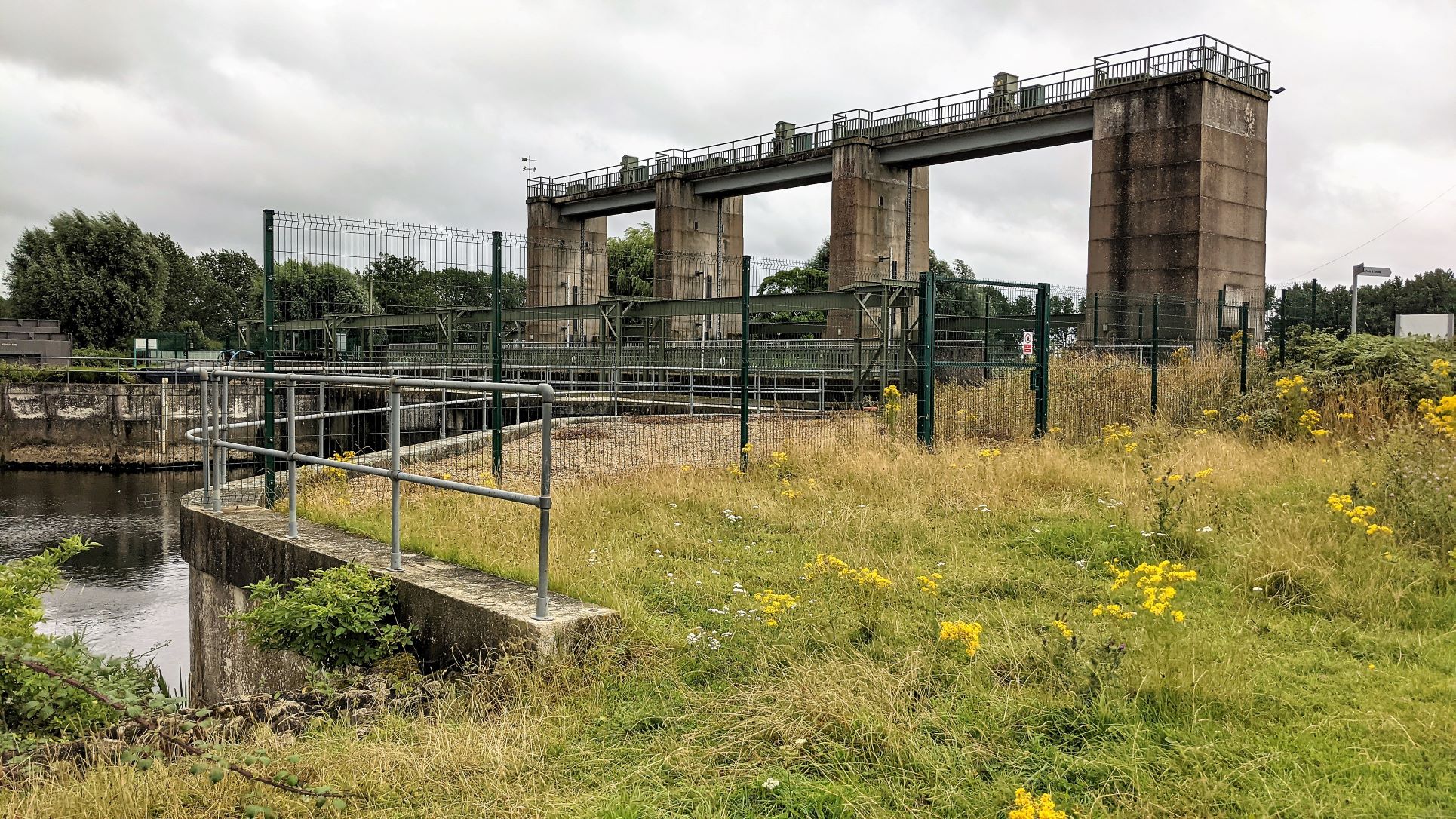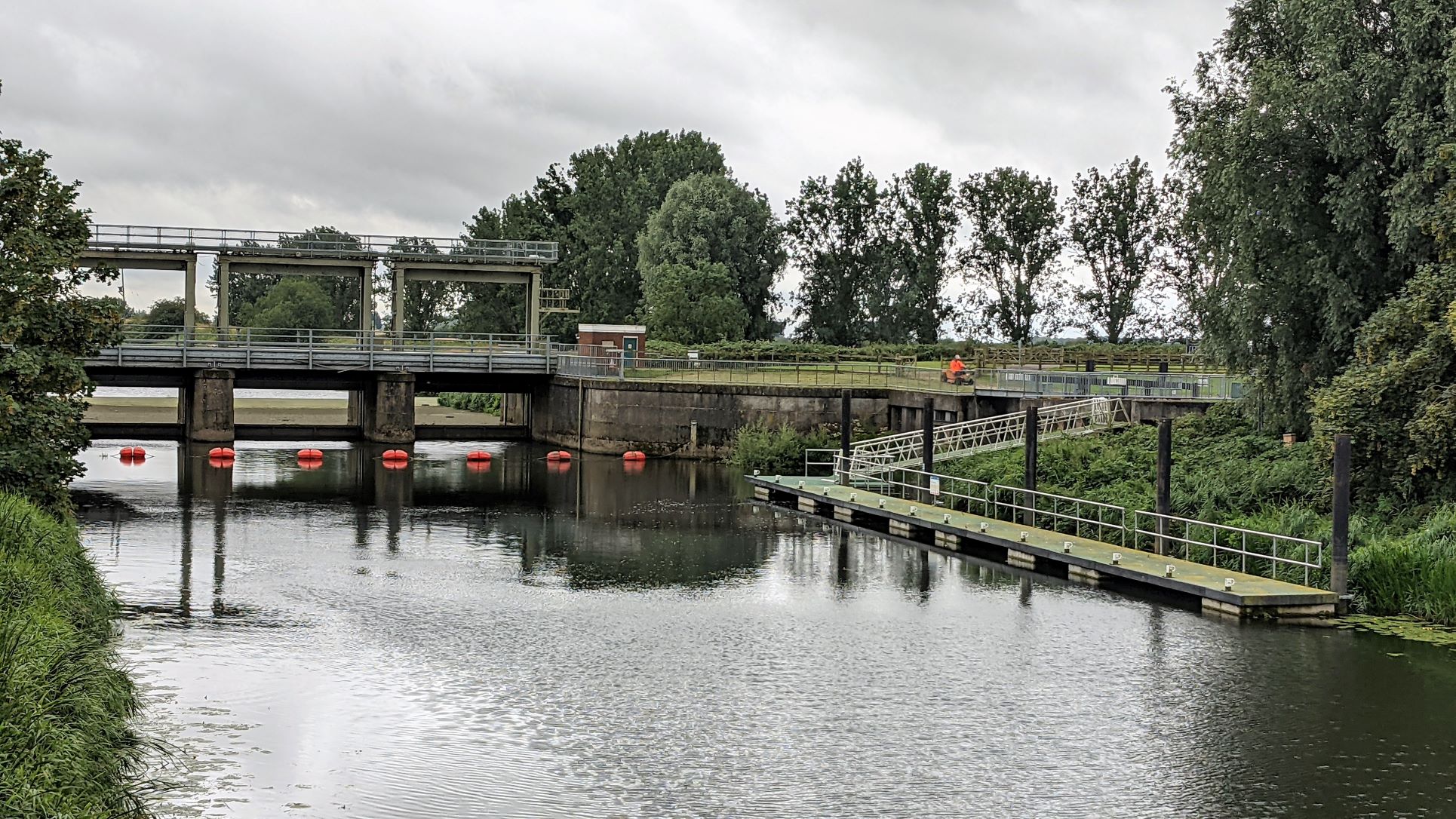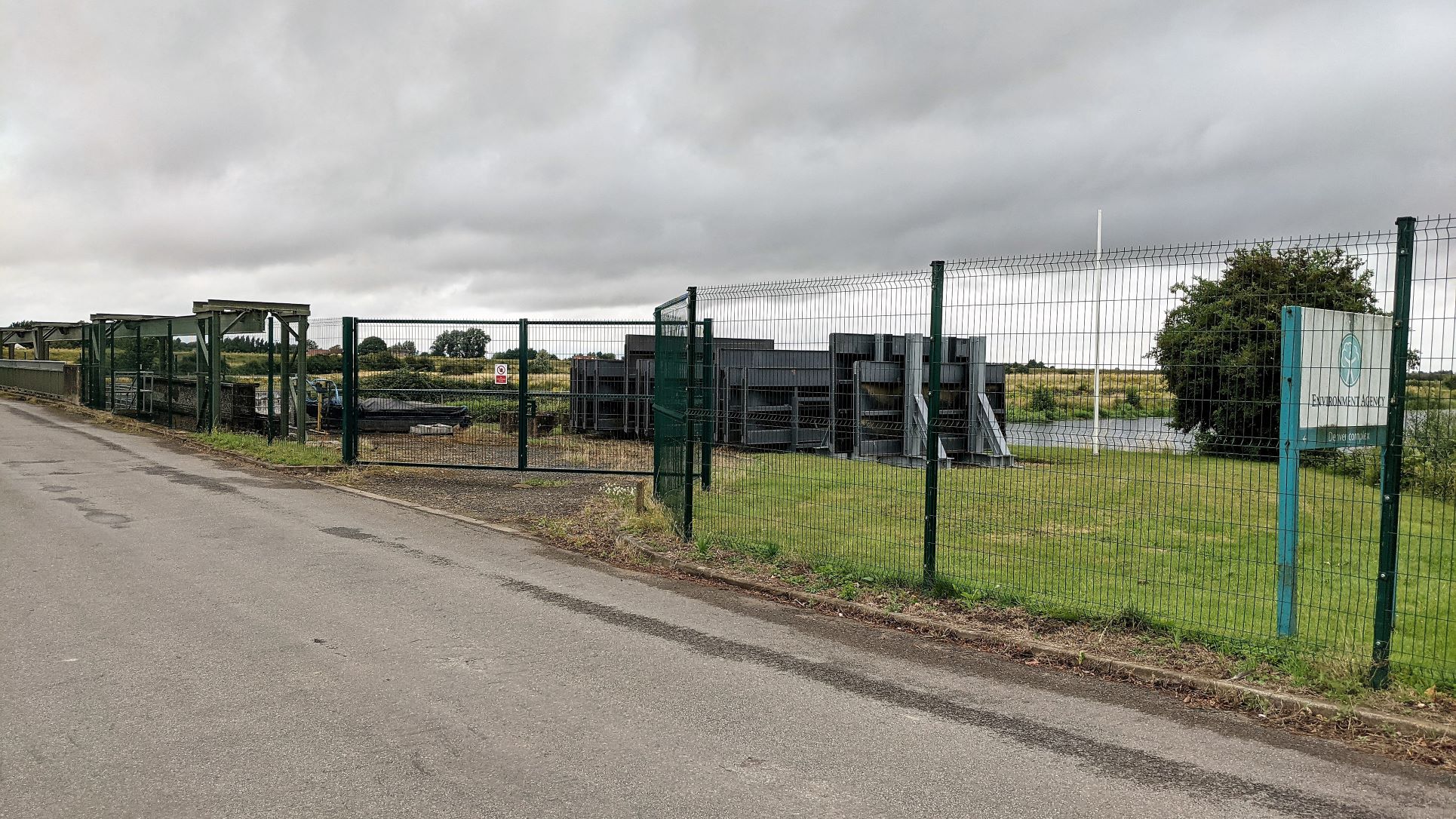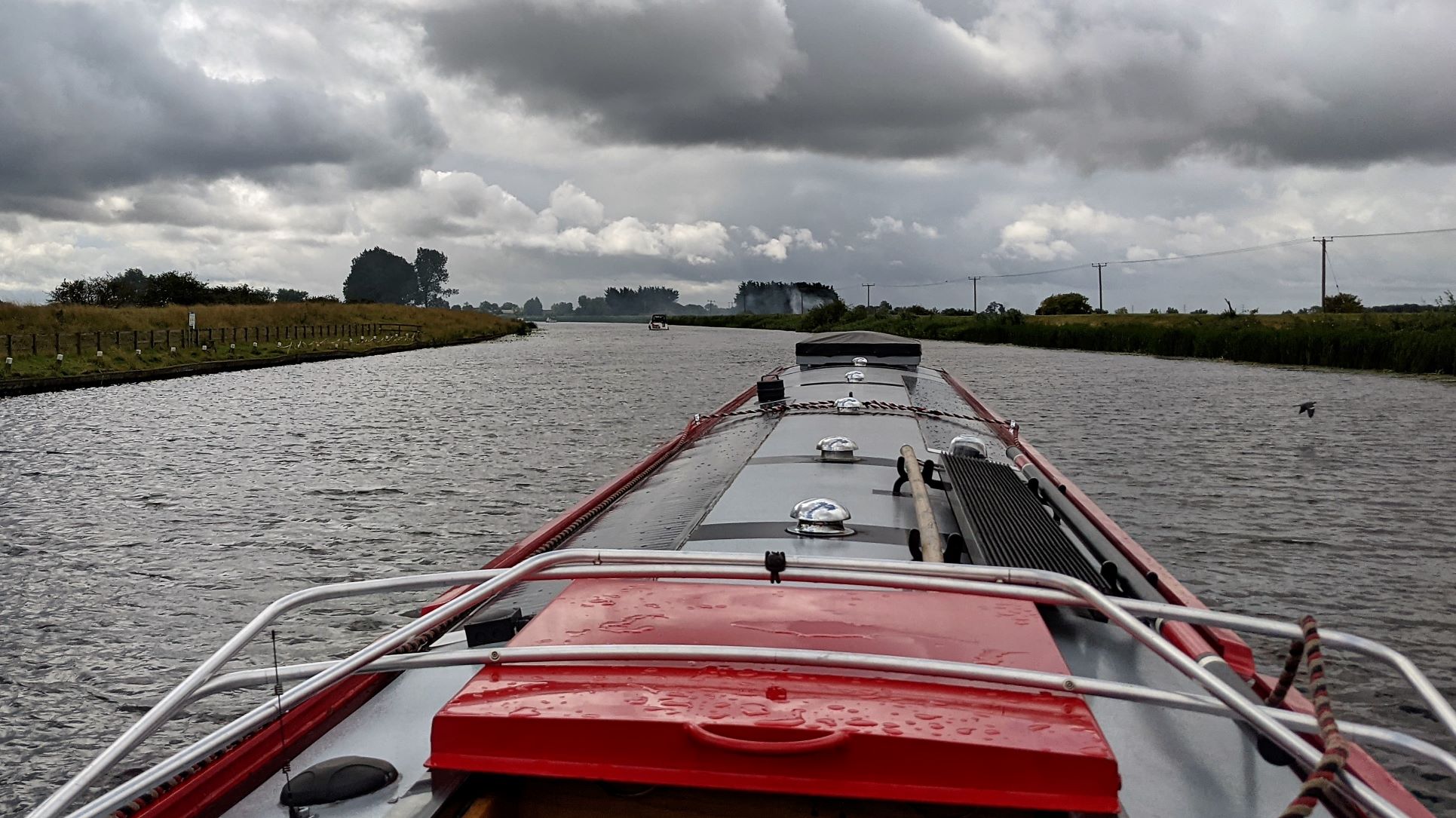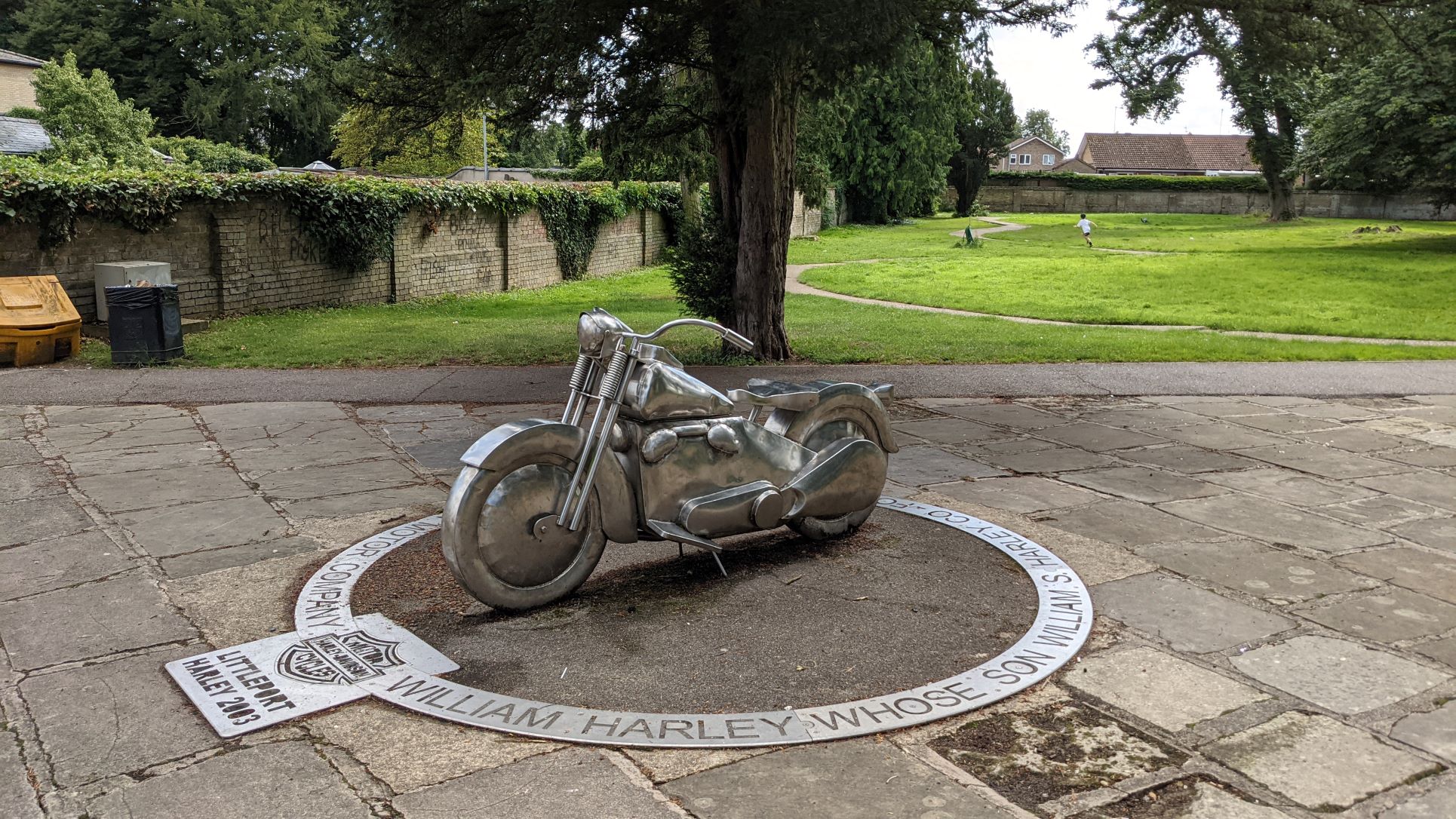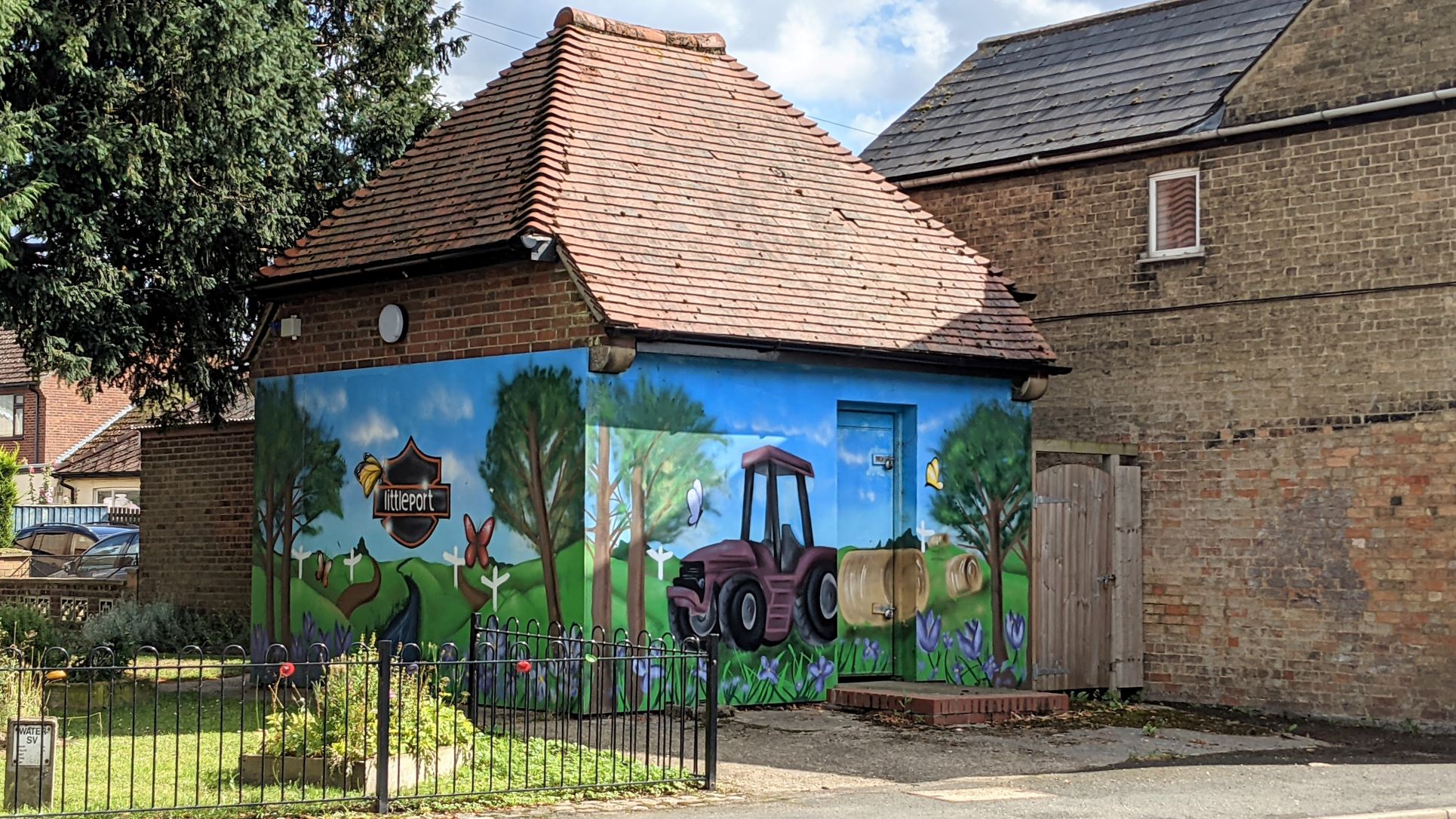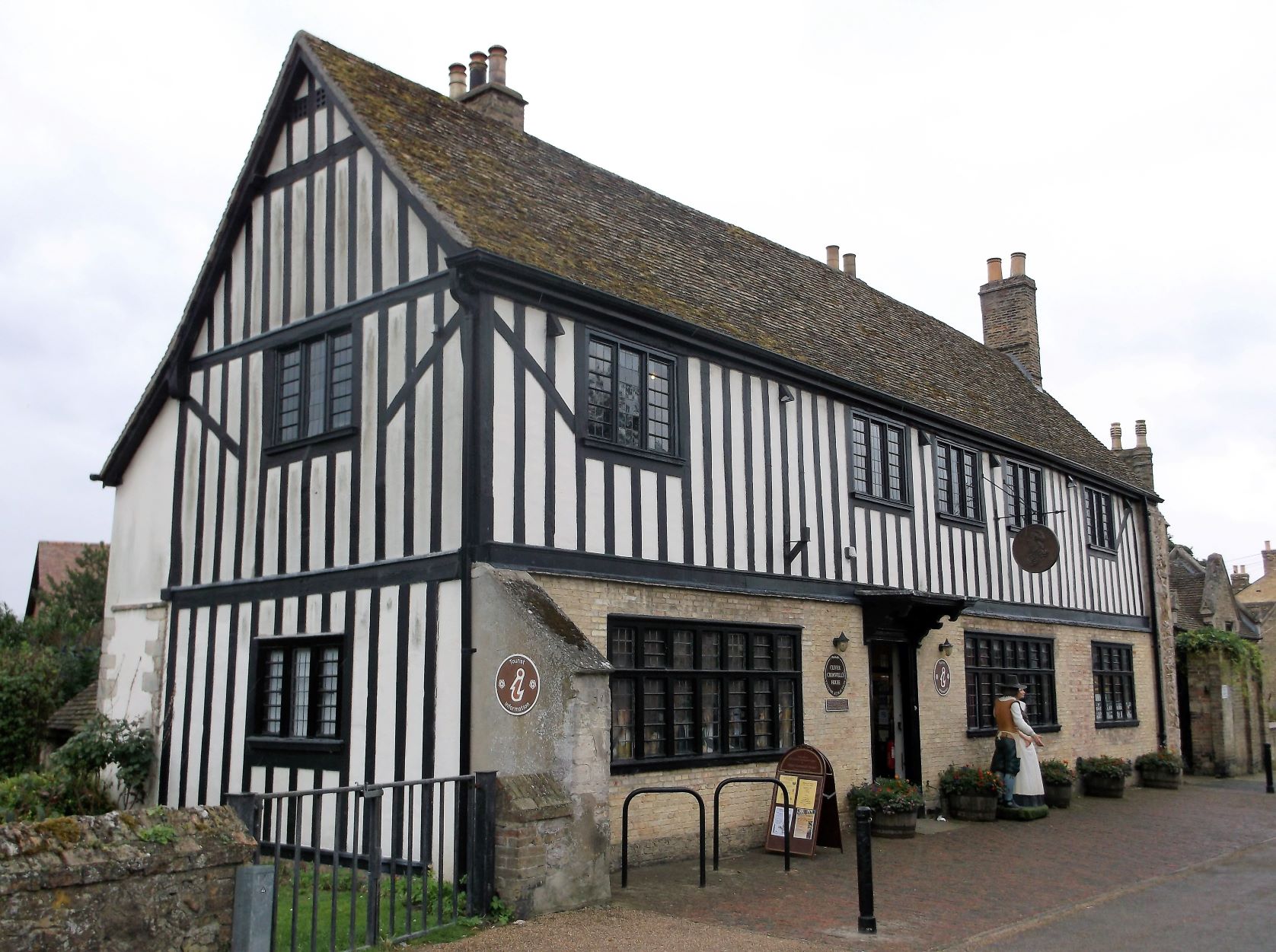Denver Complexity
Denver, in Norfolk, is about as far removed from its Colorado namesake as it is possible to be. Far from Rocky Mountain High it would probably be underwater if not for the constant efforts to drain the Cambridgeshire Fens, a key element of which is the array of sluices, weirs, locks and channels sited nearby.
Having moored up straight out of Denver Lock on Thursday night we had a chance for a look around the Denver Complex the following morning.
It is a massive control centre, managing water flows and flooding across the region. It feels quite a bleak area. Flat, deserted, windswept and dominated by massive civil engineering structures.
The site covers a few acres and there is an excellent set of information broads that explain the history and the purpose of the huge channels and waterways that have been constructed and are now controlled here.
One story I found interesting is the solution found, in the nineteen sixties, to a predicted shortage of water in South Essex. The Cut-Off Channel was designed to relieve the South Level of excess water. To solve the potential shortage in South Essex a new sluice was designed and constructed to reverse the flow in the Cut-Off Channel and instead send three hundred and eighteen million litres of excess water across country to the Essex reservoirs, on a journey of four days, along new pipelines and a twenty kilometre long tunnel. The tunnel itself was dug from each end, using laser guidance to set and maintain the route. The ten kilometre sections met with a single centimetre deviation and set a world record of tunnelling four hundred and sixty four metres a week in the process.
Wandering around you get sense of the massive scale of the water management operation here and yet, using the river level fifteen miles away at Ely to monitor the current status, there is just a twenty five centimetre difference between the upper and lower target levels that sustain navigation on the one hand and avoid flooding on the other.
Ten Mile Bank
Leaving Denver you head down Ten Mile Bank, which rather speaks for itself. The Great Ouse is a natural river but after the worst floods ever recorded, in nineteen forty seven, the Great Ouse Protection Scheme undertook a vast range of works, over a decade, which included artificially widening and deepening the Great Ouse back to Ely and connecting it to the Relief Channel via a sluice. As a result the landscape didn't seem to have changed all that much. A long stretch, through completely flat, open country, hidden behind the high banks.
The biggest differences to The Middle Levels were the width of the channel, which feels vast and an increase in the speed limit, to a dizzying seven miles per hour.
The weather had turned slightly against us yesterday, with steadily rising winds and some rain while we waited at Salters Lode. It rained heavily overnight and a strong wind remained a key feature. We had a few very light showers and dodged one heavier one over lunch, then the sun came through for the afternoon, though the wind remained. Ten miles on we moored up opposite Littleport at about two-thirty.
We went for a stroll around the town in the afternoon. Crossing the bridge, Victoria Street is a long and tedious straight road up into the town from the river. Our overriding impression, as we walked up it and arrived at the Co-op store in the centre, was of a really strange combination of architecture and styles all mixed in together, with no strong theme of date or purpose; just one or two houses thrown up in odd spaces, here or there, with no apparent control. Some were clearly early twentieth century, some very recent and there were examples of everything in between.
The Co-op stands on the site of the Globe Inn, the flashpoint for the Littleport Riots. In May 1816, starving and disgruntled at the rising price of bread, fifty-six residents of the town met at The Globe Inn to discuss their situation. Inevitably, they had a drink while they talked, although it is unclear how they had money for ale but not for bread. Fuelled by drink they took to the streets and their numbers swelled as they sought out wealthier townsfolk, intimidated and robbed them and ransacked their houses. They ignored the vicar's attempt to read the riot act, forcing him to gather his family and flee to Ely. The next day, having loaded an eight foot punt gun onto a stolen wagon, they had a day out in Ely, drinking and terrorising the populace before returning to Littleport. Some say this is still a normal Saturday night out in the Fens.
On the third day a troop of Dragoons arrived and eventually put down the riot, which fizzled out when one of the rioters attacked a trooper, attempted to flee and was shot in the head. Eighty two people were committed for trial and twenty four, including one woman, sentenced to death. Only five were eventually executed, the rest having their sentences commuted to transportation or imprisonment.
Further up, across the High Street, we came across this memorial to William Harley. You might think that, for this sculpture to be installed, this would be the man who founded Harley Davidson motor cycles but the connection is a little more tenuous. William Harley left Littleport, with his wife, in eighteen fifty nine, at the age of twenty-four and emigrated to Milwaukee. Twenty years later he had a son, William S. Harley, who later went on to found the famous motor cycle company with a childhood friend, Arthur Davidson. Still, Littleport takes its fame where it can find it. They have done a splendid job of cheering up this building, which looks like a decommissioned public convenience.
If you want to see what it looked like before, check out Google Street View from 2016.
Planning Ahead
Right opposite the mooring in Littleport was the Swan On The River. You guessed it, it overlooks the river. Despite the wind, we enjoyed a pint there in the sun and reviewed our situation. Our specific plans had really only gone as far as making the crossing to Denver. Our experience of the services available from the EA was that they were unreliable. On the way down from Denver we had seen several of the EA mooring sites that were roped off as being unfit for use. At the Denver Complex, itself, all the services we were relying on there were out of commission and we had also found a notice from July, that had never been rescinded, advising that Ely services were closed for repair. Our conclusion was that we needed to do a lot more research to make sure we knew what was and wasn't available where.
Saturday morning, then, was spent entirely on posting questions to local forums asking for updates and phoning everyone who was listed as offering what we would need. We were able to check if they did, indeed, have that service and would be happy for us to use it. I think we were rather lucky that every one of the places we called did answer, eventually and most confirmed that they could help us. We also got confirmation that Ely services were open again and had been in full use the day before. Based on these results we planned our route forward for quite a number of days.
While doing all this the wind continued to blow across the fens, which led to a cruiser bashing into us as it tried to pull in and moor in front of us. At the end of the day a plastic yoghurt pot wasn't going to do too much damage to eighteen tonnes of steel but I went out to see if I could help him by taking a line and he was really struggling to get it into the bank against the wind.
Full Of Eels . . . No Hovercraft
A wet night was followed by a day of sunshine and heavy showers. The wind continued as strongly as ever, pushing us hard against the bank and we struggled to pull away, particularly as we had to get far enough out into the channel to pass under the bridge just beyond the mooring. It was an hour or so to get to Ely but we mostly avoided the rain at least.
The first mooring and the services we needed were alongside a little park just beyond the railway bridge as we approached the city. As the bridge came in sight we noticed we were being steadily overhauled by "Leisurely Fox", one of the Fox narrowboats from March. Sure enough, just as we passed under the bridge, they overtook us and dived ahead onto the moorings. Happily, there was just space available for two narrowboats or we might have felt rather aggrieved! As it was, we were able to moor up and having later reviewed other mooring areas along the riverside we were probably in the best site. Not being tight in among the houses and the bars meant it was quiet at night and the park meant we weren't overlooked.
All the waterfront and moorings were busy on a Sunday afternoon, despite the showers. Boats came and went until a Black Prince narrowboat, "Sinas" came hurtling into a space that had opened up in front of us, cut it too fine and lost control in the wind, striking us as she came in. Two hits in two days! It felt and sounded quite hard but we couldn't see any real damage in the end.
On Monday we set out to explore Ely using a leaflet we had picked up the day before at the tourist information office in Oliver Cromwell's house at the top of the town. Asking for a self-guided walking tour we were given a copy of "The Eel Trail". The Island of Ely was originally just that, a twenty three square mile clay island rising out of the marshland and at a full eighty five feet, the highest piece of land in the fens. The waters all around it had an abundant supply of eels and they were both an important part of the staple diet locally and a key asset for trade with buyers coming from London to meet the popular demand for jellied eels. The eels may well have given the island its name and were so vital to the local economy that they became embedded in every aspect of life in the town.
Following the trail, on a grey, showery but slightly less blustery Monday morning we saw many references to the eels and there are displays, sculptures and other forms of artwork all along the route that commemorate the city's relationship and history with them. However, the trail does give a good way to find your way around and there is more to see in Ely than the eels. Its island past is obvious in the steep rise from the waterfront towards the centre. The cathedral, visible from many miles around across the flat landscape, really is magnificent.
A lot of property in the area around it is owned by the King's School, which is clearly extremely affluent. The Abbey Porta, begun in the fourteenth century, once the main entrance to Ely Monastery and later used as the Prior's Prison is now owned by the school.
As is this collection of buildings with the parish church behind it, which, we think, could easily be mistaken for the cathedral.
It has to be said that the buildings and the grounds around them are kept in immaculate condition.
The town itself has a really nice feel with some quirky and independent stores alongside the familiar high street names, which all seem unusually discreet. There are plenty of good pubs, bars, restaurants and cafes and the market square in the centre holds different types of market on several days of the week.
Down at the waterfront there is still plenty of history, as well as an art gallery, a very popular tearoom and a huge warehouse of tat. Billed as an antique centre, housed in an eighteenth century maltings building, with creaking wooden floors and rickety stairs, this claims to offer ten thousand square feet of 'antiques' of all kinds.
There is silver and glass and some furniture on display but primarily it is full of the most ridiculous junk, fit for a car boot sale. Yet no-one could go in there without finding themselves drawn to something in the clutter and anyone with a specific interest, from train sets to stamp collecting, could not fail to find something to pull at their purse strings, with a promise of extending their collection.
We rounded off our day with a tour of Oliver Cromwell's House.
Although the tourist information office and a gift shop are in the main foyer there is quite an extensive tour of the Lord Protector's former family home with an audio tour to guide you round and plenty of information on Cromwell's rise to prominence and his role in the Civil War. They also run Escape Rooms and a number of other activities for groups and the place is well worth an hour or two to visit.
Overall, Ely seemed a very nice place with a good atmosphere and everything you could possibly need, except a mobile broadband signal. This is the only place, so far, where we have struggled to get any decent internet access since we added the O2 SIM to our armoury back in Milton Keynes. In Ely there was a decent signal only at the very top of the town, whether on O2 or EE and almost nothing elsewhere. For an actual city, in such an affluent area and so well-appointed in other ways this seemed really strange.



